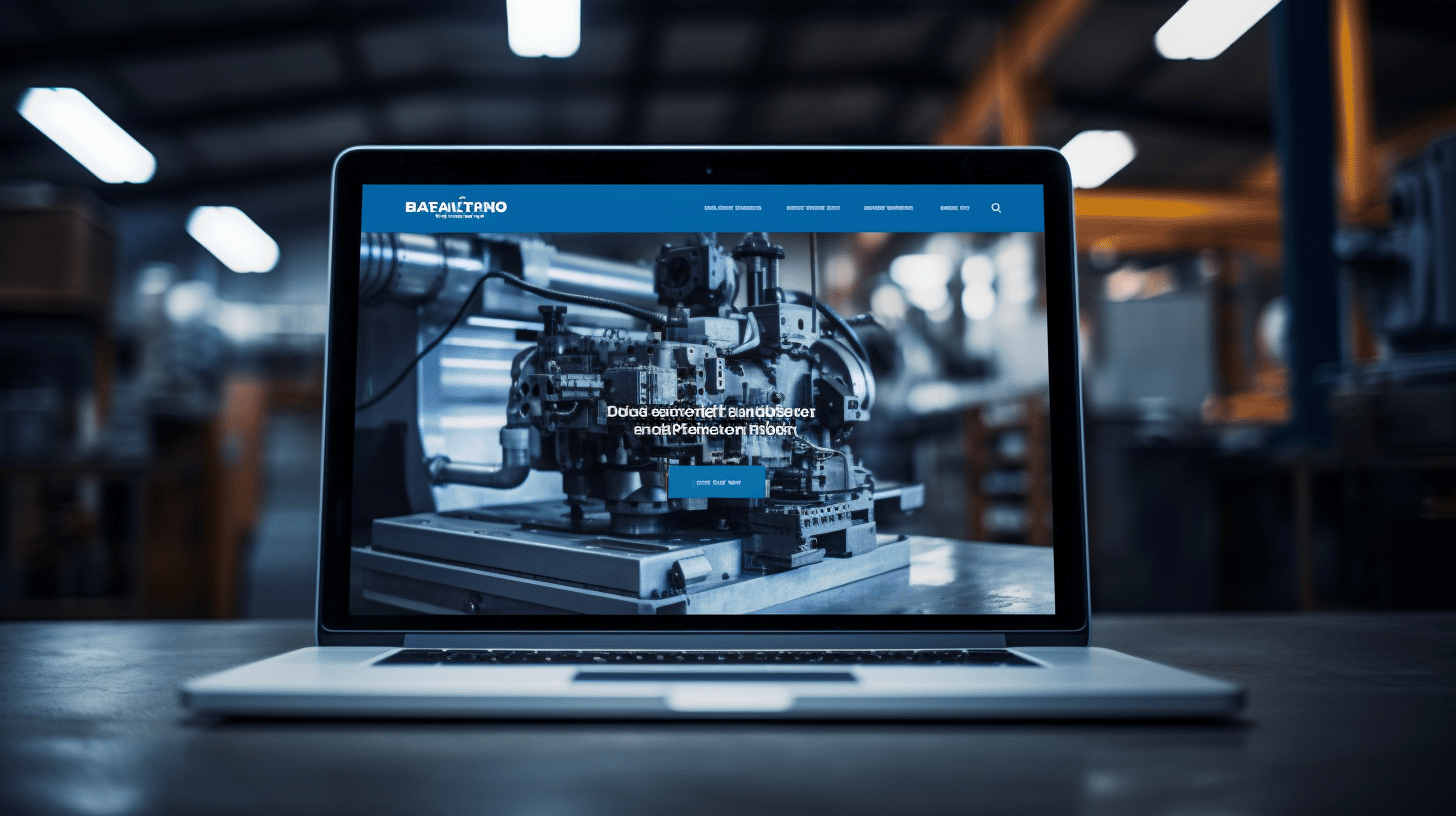在当今的数字时代,随着消费者追求便利、多样化和有竞争力的价格,网上购物变得越来越流行。只需点击几下鼠标,购物者就可以浏览各种各样的产品,并让商品送货上门。因此,企业认识到建立一个用户友好的网上商店以满足这一日益增长的趋势的重要性。
在构建电子商务网站时,WordPress 是一个绝佳的平台选择。它提供了一系列强大的功能和可自定义的选项,使企业可以轻松创建外观美观且功能齐全的在线商店。在本文中,我们将探讨一些有价值的 WordPress 网站设计技巧,这些技巧专门用于增强在线购物者的用户体验。
但在我们深入探讨设计技巧之前,让我们先仔细看看网上购物日益增长的普及程度以及它如何改变零售业格局。
网上购物日益流行
🛍️💻
近年来,网上购物已成为一种越来越流行的购买商品和服务的方式。它提供的便利性和可访问性改变了人们的购物方式。在本文中,我们将探讨网上购物日益流行的原因,并讨论电子商务行业的一些有见地的趋势。
总体市场规模
📈 网上购物行业取得了巨大的增长,其市场规模不断扩大。根据最近的统计数据,零售总额中约有 22.6% 是数字订单。这一数字凸显了网上购物对消费者行为的重大影响。
网上购物者数量
🌐 另一个值得注意的趋势是网上购物者的数量不断增加。随着互联网的普及和智能手机的普及,越来越多的人转向在线平台来满足他们的购物需求。据估计,到 2025 年,网上购物者的数量将达到惊人的 2.85 亿。
💻 网上购物超越了地理界限,让消费者可以从世界任何地方获得产品和服务。这种便利为企业接触全球客户群提供了新的机会,并促进了网上购物的全面普及。
电子商务销售趋势
💰 电子商务销售的未来前景光明。预计到 2024 年,该行业的销售额将超过 $6.3 万亿。这种上升趋势可以归因于各种因素,包括技术进步、改进的运输和交付选项以及增强的安全措施。
👨💻 除了整体销售额的增长外,网上购物在广泛的人口群体中也变得越来越普遍。目前,超过 80% 的美国人口在网上购物,这表明电子商务平台得到了广泛的接受和采用。
📈 预测进一步证明了网上购物的增长潜力,表明到 2027 年,电子商务销售额可能达到惊人的 $8 万亿。这一预测强调了网上购物在全球市场上日益增长的受欢迎程度和重要性。
综上所述
🛍️💻 网上购物越来越受欢迎,这得益于其便利性、可访问性以及只需单击按钮即可获得的大量产品和服务。电子商务行业没有显示出放缓的迹象,预计未来几年将出现显着增长。随着技术的不断进步和消费者偏好的演变,网上购物有望成为我们日常生活中不可或缺的一部分。
用户体验在网上购物中的重要性
随着电子商务的兴起,用户体验 (UX) 已成为在线购物成功的关键因素。在当今竞争激烈的环境中,企业需要优先为客户创造无缝且愉快的体验。积极的用户体验不仅可以提高客户满意度和忠诚度,还可以推动销售和收入。
由于用户体验差导致网上购物放弃
您是否知道 60% 的在线购物者由于用户体验不佳而放弃购买?这是一个惊人的数字!这表明企业投资创建直观且用户友好的界面是多么重要。以下是用户可能放弃购物车的几个原因:
- 导航复杂,布局混乱
- 加载时间长,网站性能慢
- 缺乏信任和安全担忧
- 难以找到所需的产品或信息
为了解决购物车放弃问题,企业必须专注于优化网站的用户体验。通过解决这些痛点,他们可以显著提高转化率和整体客户满意度。
移动购物的重要性
智能手机的出现彻底改变了我们网上购物的方式。仅在美国就有超过 2.7 亿消费者拥有智能手机。移动设备已成为我们生活中不可或缺的一部分,让我们可以随时随地浏览和购物。因此,移动购物已获得显著的吸引力,企业无法忽视它。
为了确保无缝的移动购物体验,企业应考虑以下因素:
- 移动响应能力:网站和应用程序必须针对移动设备进行优化,确保布局、按钮和内容在小屏幕上易于访问和阅读。
- 简化结账流程:简化支付流程并尽量减少结账所需的步骤数,有助于减少摩擦并提高转化率。
- 移动支付选项:提供流行的移动支付方式,例如Apple Pay和Google Pay,可以提高移动购物者交易的便利性和速度。
通过优先考虑移动用户体验,企业可以挖掘庞大的移动购物者市场并在竞争中保持领先地位。
购买前在线研究
如今的消费者在购买商品之前,会自然而然地进行在线研究。事实上,高达 81% 的零售购物者会在购买商品之前上网收集信息。因此,企业必须提供无缝且信息丰富的在线体验。
以下是企业可以满足消费者研究导向思维的几种方法:
- 清晰的产品描述和规格:提供有关产品的详细和准确的信息有助于潜在客户做出明智的决定。
- 用户生成内容:其他客户的评论和评分会极大地影响购买决策。鼓励和展示用户生成内容可以建立信任和可信度。
- 个性化推荐:利用算法根据用户的浏览和购买历史推荐相关产品可以增强购物体验并增加购买的可能性。
通过了解消费者的研究行为并设计满足他们需求的平台,企业可以将自己定位为值得信赖和以客户为中心的企业。
用户体验对于在线购物的成功至关重要。通过优先考虑直观的设计、移动响应能力和信息丰富的内容,企业可以提高客户满意度、减少购物车放弃率并提高利润。因此请记住,在竞争激烈的在线购物世界中,良好的用户体验不仅仅是可有可无的,更是必需品。
电子商务领域最流行的 WordPress 网站设计趋势
在不断发展的电子商务世界中,保持领先地位对于希望在线上产生影响的企业至关重要。实现这一目标的一种方法是采用最新的 WordPress 网站设计趋势。凭借其用户友好的界面和广泛的自定义选项,WordPress 是许多电子商务企业家的首选平台。
那么,2024 年电子商务的 WordPress 网站设计趋势是什么?让我们深入探索那些可以提升您的在线形象并吸引客户的令人兴奋的可能性。
颜色和字体
🎨 醒目的颜色和字体可以立即吸引注意力并产生令人难忘的视觉冲击。想想鲜艳的色调、大胆的渐变色和独特的字体组合。尝试使用醒目的颜色和吸引人的字体可以让您的电子商务网站脱颖而出,给访客留下深刻的印象。
移动优先方法
📱 随着智能手机和平板电脑越来越多地用于在线购物,采用移动优先的设计方法至关重要。确保您的 WordPress 网站完全响应并针对移动设备进行了优化。这意味着您的网站应该无缝适应不同的屏幕尺寸,为移动购物者提供出色的用户体验。
互动购物体验
💻 通过互动元素增强购物体验可以提高客户参与度并增加转化率。考虑集成产品配置器、360 度产品视图和交互式产品图库等功能。这些互动元素使客户能够以更身临其境和更具吸引力的方式与您的产品互动,最终带来更令人满意的购物体验。
简约设计
🖌️ 少即是多!极简主义设计仍然是网站设计的流行趋势,电子商务也不例外。干净的布局、充足的空白空间和简化的导航可以为您的客户创造整洁且视觉上有吸引力的体验。通过删除不必要的元素并专注于重要方面,您可以突出您的产品并鼓励无缝的购物之旅。
个性化和动画
🌟 个性化是为您的客户创造独特和量身定制的体验的关键。定制的产品推荐、个性化的购物车和基于用户偏好的定向内容可以显著提高用户参与度并促进销售。此外,微妙的动画可以为您的网站增添一丝互动性和视觉趣味,使其更具吸引力和令人难忘。
采用超大字体
🔠 大而粗的字体是网站设计中持续占据主导地位的趋势。使用超大字体不仅可以吸引注意力,还可以为您的电子商务网站增添视觉层次感和个性。考虑使用粗体标题和大尺寸字体来突出重要消息和产品信息。
使用空白和极简主义
📏 有效利用空白空间可以为您的网站营造出优雅、精致和自由的感觉。干净简约的设计加上充足的空白空间可以让您的产品大放异彩,并确保您的客户能够专注于真正重要的事情——您的产品。不要害怕拥抱简约,让您的产品自己说话。
内容可访问性
🌐 让每个人都能访问您的网站不仅是道义上的责任,也是明智的商业举措。确保您的 WordPress 网站遵循可访问性标准,例如为图片提供 alt 标签、实施适当的标题结构以及满足残障用户的需求。通过优先考虑可访问性,您可以扩大覆盖范围并为所有人创造更具包容性的购物体验。
虚拟现实和聊天机器人
👓 利用虚拟现实 (VR) 的力量并实施聊天机器人可以彻底改变客户与您的电子商务商店互动的方式。虚拟现实技术让用户可以虚拟试穿产品、可视化空间并获得更身临其境的购物体验。此外,聊天机器人可以提供即时客户支持、回答常见问题并简化购买流程 - 提高客户满意度并增加销售额。
这些适用于电子商务的顶级 WordPress 网站设计趋势必定会改变您的在线形象,并帮助您在竞争激烈的市场中脱颖而出。
结论
总之,创建用户友好的在线商店对于任何电子商务企业的成功都至关重要。通过实施有效的 WordPress 网站设计技巧,例如利用颜色和排版、采用移动优先方法以及提供交互式购物体验,您可以增强用户体验并推动更多销售。
请记住,简约的设计、个性化和动画也有助于打造具有视觉吸引力和吸引力的网站。此外,确保内容可访问性、利用虚拟现实和聊天机器人以及融入留白和极简主义可以进一步提升用户体验。
通过关注用户体验并融入这些适用于电子商务的顶级 WordPress 网站设计趋势,您可以创建一个不仅可以吸引和留住客户,还可以提高转化率并增加收入的网站。
如果您正在寻找可靠且用户友好的托管 WordPress 托管平台来支持您的电子商务网站,请考虑使用 Managed-WP.™
使用 Managed-WP,您可以简化基础架构,并享受专注于提供卓越数字体验的自由。他们的专家 24/7/365 WordPress 支持、WordPress NOC、备份管理、补丁管理和主动监控可确保您的网站顺利且安全地运行。
要了解有关 Managed-WP 的更多信息以及他们如何帮助您优化 WordPress 网站,请访问其网站 https://managed-wp.com。🚀
常见问题
- 使用 WordPress 创建网上商店有哪些用户友好的设计技巧?
使用 WordPress 创建在线商店的一些用户友好型设计技巧包括:1. 保持设计简单直观,2. 使用清晰且描述性的导航菜单,3. 针对移动设备优化您的网站,4. 突出显示产品信息和图像,5. 包含搜索栏以便于发现产品。
- 我应该使用预先构建的 WordPress 主题还是为我的网上商店聘请设计师?
这取决于您的预算和具体要求。预建的 WordPress 主题可能是一种经济实惠且方便的选择,尤其是当您刚开始使用时。但是,聘请设计师可以为您提供独特的定制设计,以反映您的品牌身份。
- 如何优化我的网上商店的加载速度?
为了优化您的网上商店的加载速度,您可以:1. 选择轻量级且优化的 WordPress 主题,2. 压缩和优化您的图像,3. 使用缓存插件,4. 缩小 CSS 和 JavaScript 文件,5. 使用可靠且快速的托管服务提供商。
- WordPress 网上商店需要哪些必备插件?
WordPress 中在线商店的一些必备插件是:1. WooCommerce,用于管理产品和交易,2. Yoast SEO,用于优化商店的 SEO,3. WPForms,用于创建联系和询问表格,4. MonsterInsights,用于跟踪网站分析,5. Sucuri,用于网站安全。
- 我如何才能提高我的网上商店的安全性?
为了提高网上商店的安全性,您可以:1. 使用强大而独特的密码,2. 定期更新 WordPress、主题和插件,3. 安装信誉良好的安全插件,如 Wordfence 或 Sucuri,4. 启用 SSL 以确保数据的安全传输,5. 定期备份您的网站。



















